News
Tesla Superchargers were over 10 times as reliable as these rivals
Tesla and Rivian topped this charger reliability study, outperforming competitors by a wide margin.
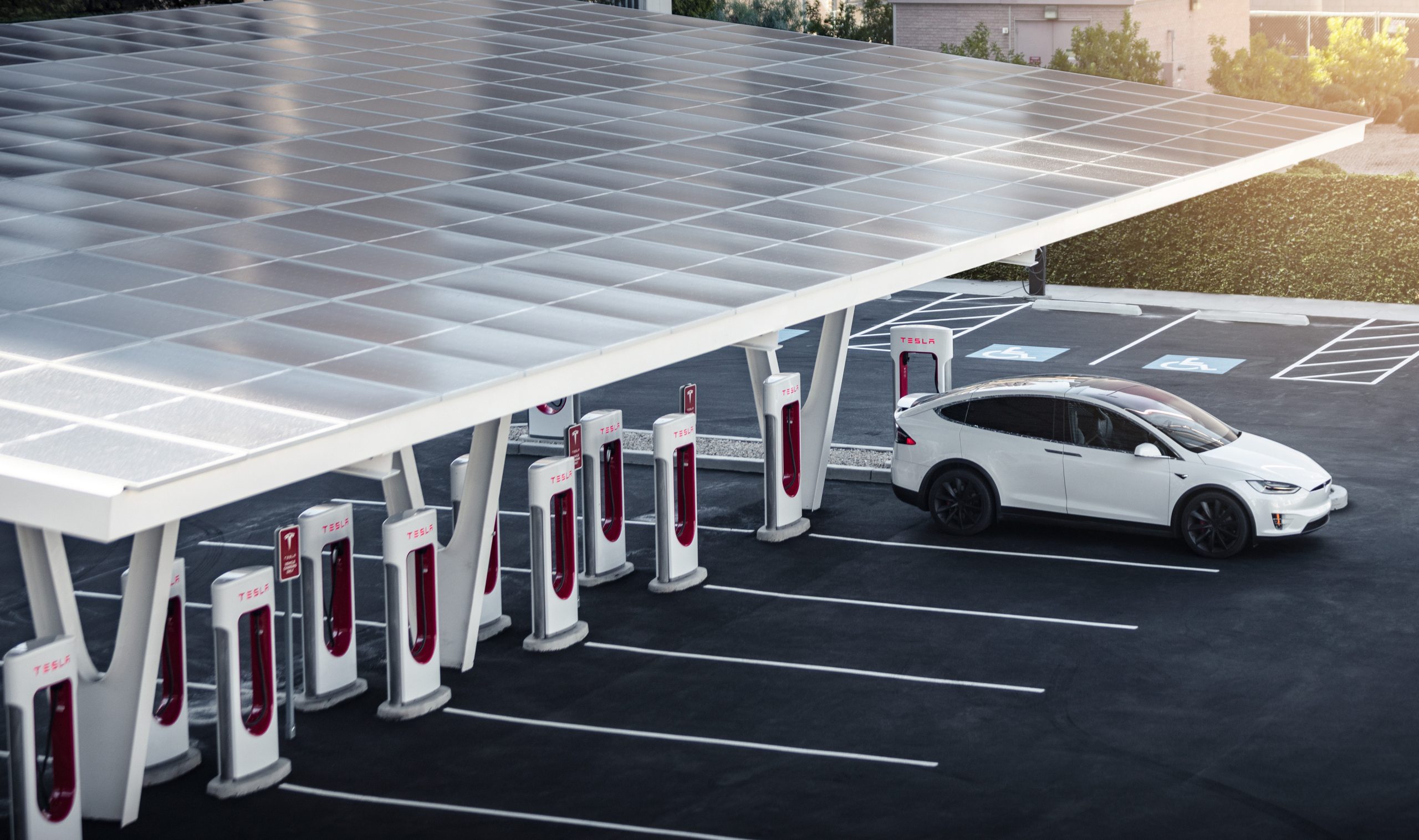
A new study shows that many electric vehicle (EV) charging networks were substantially less reliable than Tesla’s Superchargers or Rivian’s Adventure Network (RAN), while hardware problems accounted for the most common issue experienced
In a Consumer Reports study shared last week, Tesla and Rivian’s charging networks were found to be significantly more reliable than those of other companies, though EV owners reported a problem with about one out of every five charging sessions initiated overall. Respondents said they had issues with just 4 percent of charging sessions at Tesla’s Superchargers, making them the most reliable, while issues with Rivian’s network were reported for just 5 percent of sessions.
Comparatively, Shell Recharge users faced the most issues, with respondents detailing problems in 48 percent of charging sessions. The next least reliable networks were EVgo and Blink, which followed with 43 percent and 41 percent problems reported, respectively. DC fast-chargers had a reported issue rate of 34 percent, while owners faced problems with Level 2 chargers in 25 percent of sessions.
“The findings show that the public charging experience can vary widely based on the vehicle and the charging networks operating in one’s community and along frequent trips,” writes Drew Toher, Consumer Reports’ Campaign Manager for Sustainable Transportation projects. “This is an important consideration for those without access to home charging. With these findings, CR is encouraging all charging networks to take ownership of their performance and implement measures to improve reliability.”
The survey included responses from 1,230 owners of BEVs and plug-in hybrid EVs (PHEVs), detailing experiences from roughly 5,700 individual charging sessions. The majority of issues customers faced were related to hardware, while they also reported problems with payment, charging power, and other factors.
Out of those who said they had issues directly with the chargers, 76 percent said they encountered broken or unresponsive screens, or those with error messages.

Credit: Consumer Reports (graphic by Sharon Seidl)
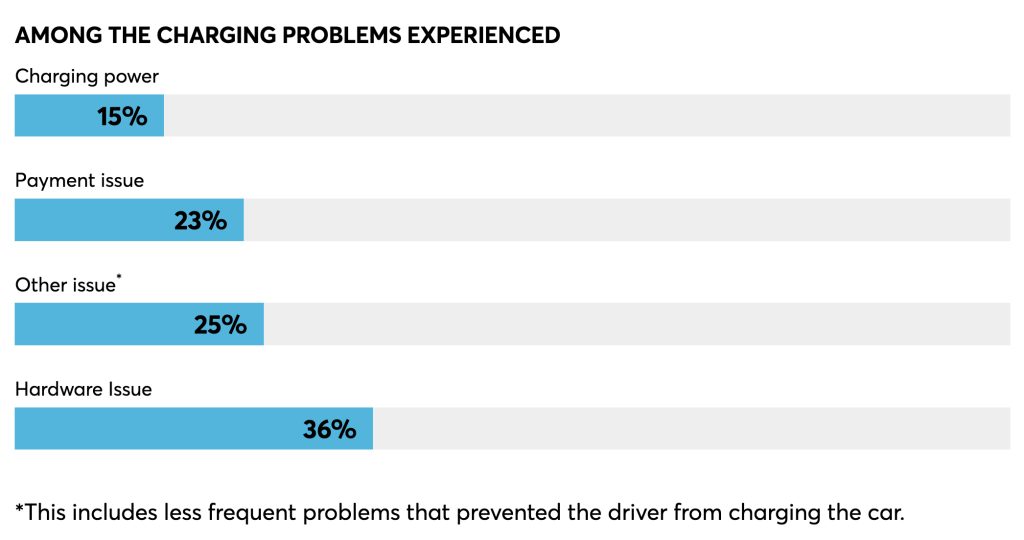
Credit: Consumer Reports (graphic by Sharon Seidl)
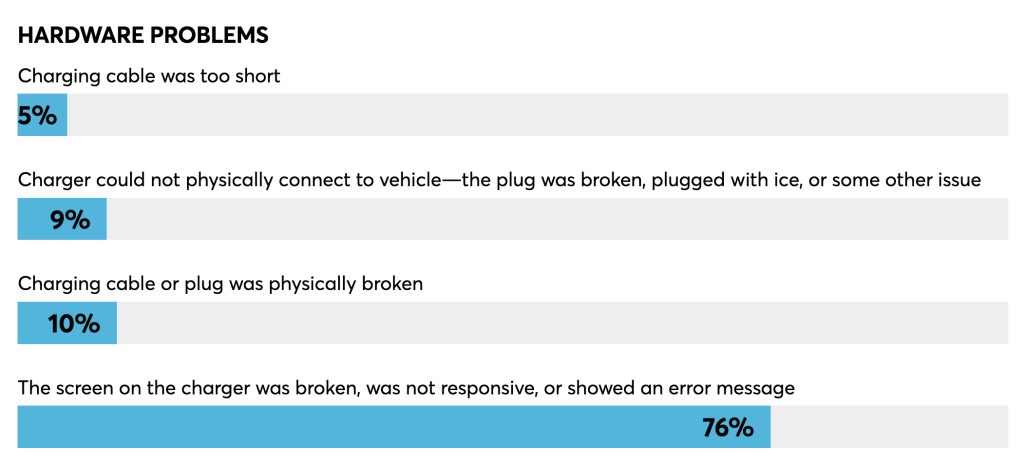
Credit: Consumer Reports (graphic by Sharon Seidl)
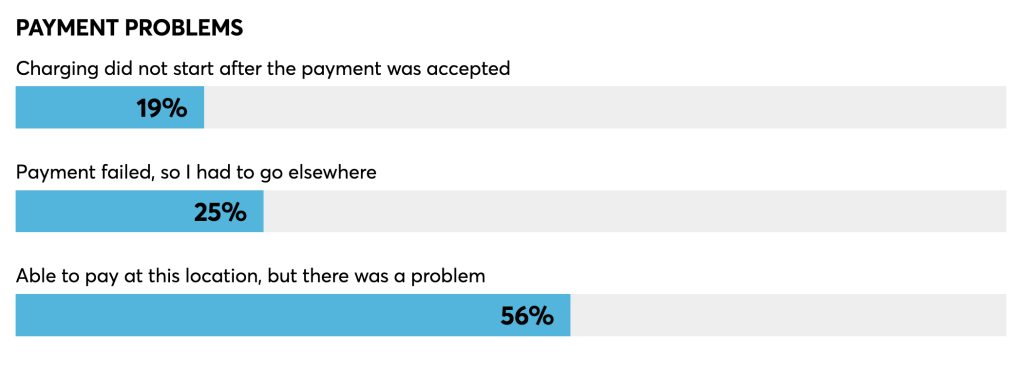
Credit: Consumer Reports (graphic by Sharon Seidl)
Teslas constant push for improvements in action.💪
Superchargers are already among the best in the industry, but Tesla is still improving the system.⚡️ https://t.co/wD9D2Z1CJe
— TESLARATI (@Teslarati) February 21, 2025
READ MORE ON EV CHARGING: Tesla Superchargers dominate J.D. Power EV Charging Study
“By calling out broken screens, payment issues, and slow charging power, community members are crowdsourcing data that will hold charging networks accountable and improve drivers’ experience with public charging,” Toher adds. “This will help tackle the biggest impediment for consumers looking to purchase a more efficient vehicle.”
The release also notes that EV owners planning to charge beyond their home can take a few steps to help ensure the best experiences possible, including making accounts for several different charging networks, getting apps like A Better Route Planner, Plugshare, and CR partner Chargeway, and performing battery preconditioning, among others.
Tesla’s Superchargers have repeatedly been found to be the most reliable in markets around the world, and in surveys from Consumer Reports, JD Power, and other auto industry research firms. Rivian has also followed Tesla in taking routine measures to keep owners informed about the reliability of chargers. One such example includes the automaker’s deployment last April of “charging scores” for the RAN network, to help improve customer experiences by directing them to working stations.
Tesla exec highlights advantages of prefabricated Superchargers

News
Tesla dispels reports of ‘sales suspension’ in California
“This was a “consumer protection” order about the use of the term “Autopilot” in a case where not one single customer came forward to say there’s a problem.
Sales in California will continue uninterrupted.”

Tesla has dispelled reports that it is facing a thirty-day sales suspension in California after the state’s Department of Motor Vehicles (DMV) issued a penalty to the company after a judge ruled it “misled consumers about its driver-assistance technology.”
On Tuesday, Bloomberg reported that the California DMV was planning to adopt the penalty but decided to put it on ice for ninety days, giving Tesla an opportunity to “come into compliance.”
Tesla enters interesting situation with Full Self-Driving in California
Tesla responded to the report on Tuesday evening, after it came out, stating that this was a “consumer protection” order that was brought up over its use of the term “Autopilot.”
The company said “not one single customer came forward to say there’s a problem,” yet a judge and the DMV determined it was, so they want to apply the penalty if Tesla doesn’t oblige.
However, Tesla said that its sales operations in California “will continue uninterrupted.”
It confirmed this in an X post on Tuesday night:
This was a “consumer protection” order about the use of the term “Autopilot” in a case where not one single customer came forward to say there’s a problem.
Sales in California will continue uninterrupted.
— Tesla North America (@tesla_na) December 17, 2025
The report and the decision by the DMV and Judge involved sparked outrage from the Tesla community, who stated that it should do its best to get out of California.
One X post said California “didn’t deserve” what Tesla had done for it in terms of employment, engineering, and innovation.
Tesla has used Autopilot and Full Self-Driving for years, but it did add the term “(Supervised)” to the end of the FSD suite earlier this year, potentially aiming to protect itself from instances like this one.
This is the first primary dispute over the terminology of Full Self-Driving, but it has undergone some scrutiny at the federal level, as some government officials have claimed the suite has “deceptive” naming. Previous Transportation Secretary Pete Buttigieg was vocally critical of the use of the name “Full Self-Driving,” as well as “Autopilot.”
News
New EV tax credit rule could impact many EV buyers
We confirmed with a Tesla Sales Advisor that any current orders that have the $7,500 tax credit applied to them must be completed by December 31, meaning delivery must take place by that date. However, it is unclear at this point whether someone could still claim the credit when filing their tax returns for 2025 as long as the order reflects an order date before September 30.
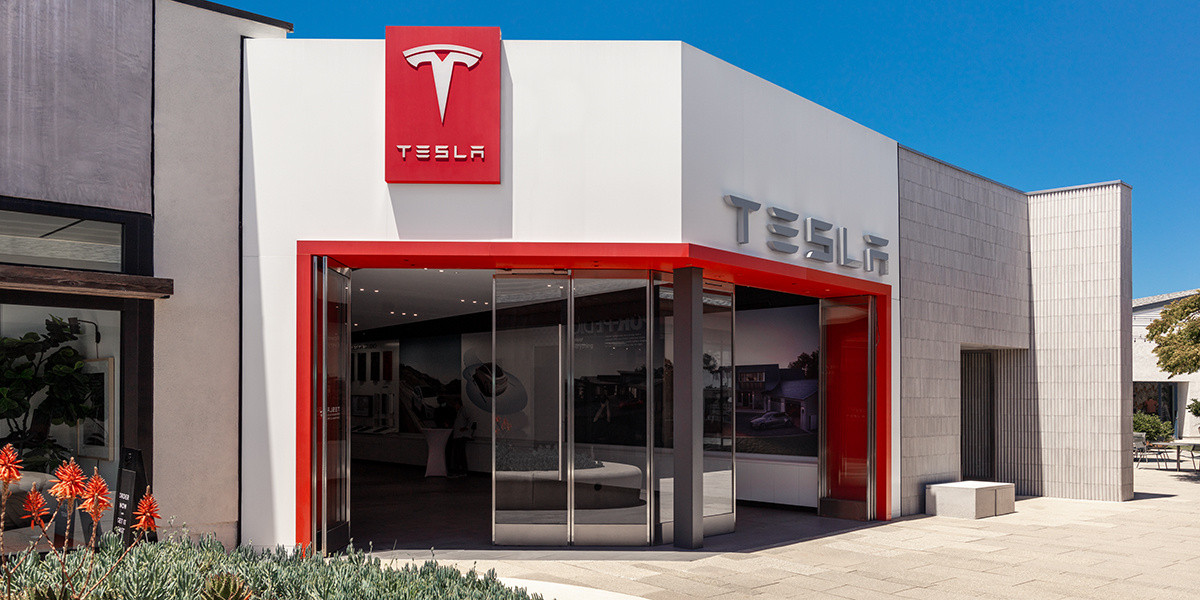
Tesla owners could be impacted by a new EV tax credit rule, which seems to be a new hoop to jump through for those who benefited from the “extension,” which allowed orderers to take delivery after the loss of the $7,500 discount.
After the Trump Administration initiated the phase-out of the $7,500 EV tax credit, many were happy to see the rules had been changed slightly, as deliveries could occur after the September 30 cutoff as long as orders were placed before the end of that month.
However, there appears to be a new threshold that EV buyers will have to go through, and it will impact their ability to get the credit, at least at the Point of Sale, for now.
Delivery must be completed by the end of the year, and buyers must take possession of the car by December 31, 2025, or they will lose the tax credit. The U.S. government will be closing the tax credit portal, which allows people to claim the credit at the Point of Sale.
🚨UPDATE: $7,500 Tax Credit Portal “Closes By End of Year”.
This is bad news for pending Tesla buyers (MYP) looking to lock in the $7,500 Tax Credit.
“it looks like the portal closes by end of the year so there be no way for us to guarantee the funds however, we will try our… pic.twitter.com/LnWiaXL30k
— DennisCW | wen my L (@DennisCW_) December 15, 2025
We confirmed with a Tesla Sales Advisor that any current orders that have the $7,500 tax credit applied to them must be completed by December 31, meaning delivery must take place by that date.
However, it is unclear at this point whether someone could still claim the credit when filing their tax returns for 2025 as long as the order reflects an order date before September 30.
If not, the order can still go through, but the buyer will not be able to claim the tax credit, meaning they will pay full price for the vehicle.
This puts some buyers in a strange limbo, especially if they placed an order for the Model Y Performance. Some deliveries have already taken place, and some are scheduled before the end of the month, but many others are not expecting deliveries until January.
Elon Musk
Elon Musk takes latest barb at Bill Gates over Tesla short position
Bill Gates placed a massive short bet against Tesla of ~1% of our total shares, which might have cost him over $10B by now
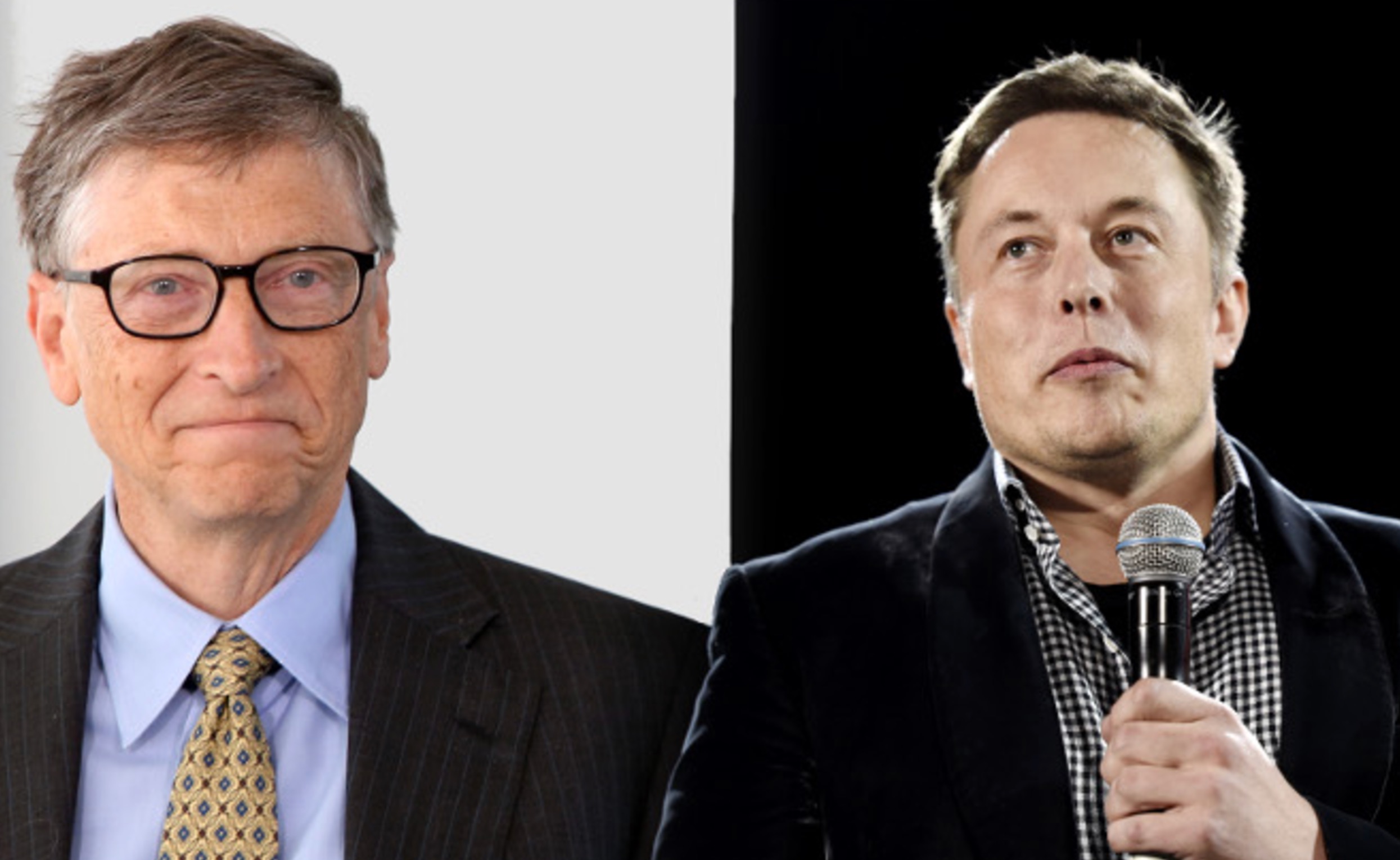
Elon Musk took his latest barb at former Microsoft CEO Bill Gates over his short position against the company, which the two have had some tensions over for a number of years.
Gates admitted to Musk several years ago through a text message that he still held a short position against his sustainable car and energy company. Ironically, Gates had contacted Musk to explore philanthropic opportunities.
Elon Musk explains Bill Gates beef: He ‘placed a massive bet on Tesla dying’
Musk said he could not take the request seriously, especially as Gates was hoping to make money on the downfall of the one company taking EVs seriously.
The Tesla frontman has continued to take shots at Gates over the years from time to time, but the latest comment came as Musk’s net worth swelled to over $600 billion. He became the first person ever to reach that threshold earlier this week, when Tesla shares increased due to Robotaxi testing without any occupants.
Musk refreshed everyone’s memory with the recent post, stating that if Gates still has his short position against Tesla, he would have lost over $10 billion by now:
Bill Gates placed a massive short bet against Tesla of ~1% of our total shares, which might have cost him over $10B by now
— Elon Musk (@elonmusk) December 17, 2025
Just a month ago, in mid-November, Musk issued his final warning to Gates over the short position, speculating whether the former Microsoft frontman had still held the bet against Tesla.
“If Gates hasn’t fully closed out the crazy short position he has held against Tesla for ~8 years, he had better do so soon,” Musk said. This came in response to The Gates Foundation dumping 65 percent of its Microsoft position.
Tesla CEO Elon Musk sends final warning to Bill Gates over short position
Musk’s involvement in the U.S. government also drew criticism from Gates, as he said that the reductions proposed by DOGE against U.S.A.I.D. were “stunning” and could cause “millions of additional deaths of kids.”
“Gates is a huge liar,” Musk responded.
It is not known whether Gates still holds his Tesla short position.








